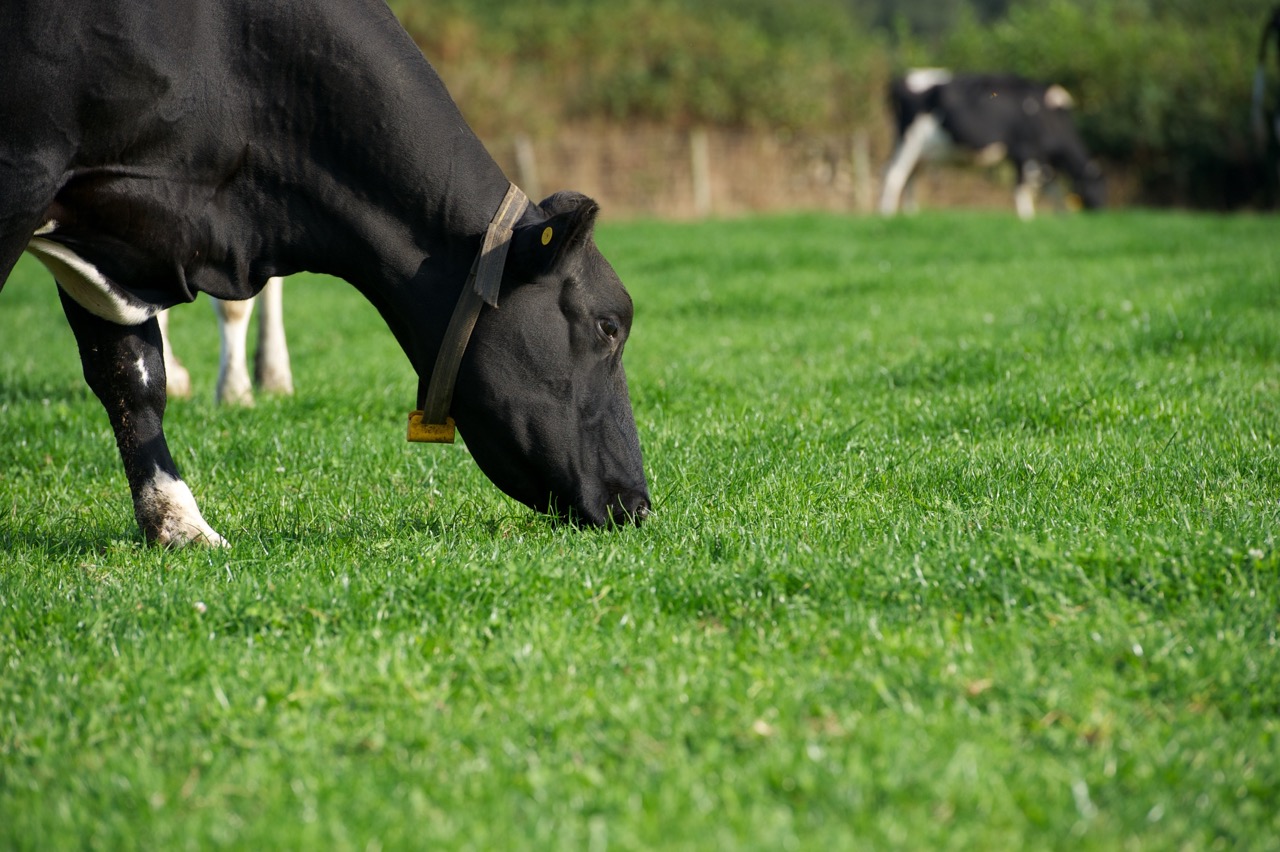What is feed efficiency?
Feed efficiency is a metric commonly used by the dairy industry to describe how well a cow is able to convert feed and forage into milk – the more efficient she is, the less feed she needs to produce a litre of milk. As an example, very efficient cows have the potential to produce up to 2kg of energy corrected milk (ECM) for every 1kg dry matter intake (DMI).
There is a wide variation amongst individual cows regarding efficiency, with several factors playing into this including genetics, animal health and nutrition. At the heart of this is the rumen, with its trillions of microbes, or “bugs”, that digest feed and forage, which means that management and nutrition have the greatest impact.
Feeding economics
With purchased feed costs being what they are this spring, it may be tempting to reduce levels of concentrate feeding to lower those expenses. However, when you consider the yield benefits from compound feeding combined with current high milk prices, it can pay to leave them in the diet.
An essential fact to remember is that a cow in early lactation will always prioritise milk production over the maintenance of her own body when it comes to energy and nutrient allocation. When the diet does not provide enough to cover yield levels, she will mobilise energy from elsewhere in her body to make up this deficit. This results in excessive body condition score (BCS) loss which leads to poor health and fertility later in lactation, meaning additional costs and inputs. Minimising BCS loss in early lactation is critical to preparing cows for a successful breeding period later in the spring or early summer.
To avoid this happening, it is critical that we focus on DMI, especially during early lactation when needs are highest, to help herds better reach their genetic potential and minimise excessive weight loss.
A high-quality silage given ad lib can alone provide an average fully housed cow enough to cover maintenance plus 13-14L milk. Additional concentrate should be provided through the parlour or diet feeder to complement existing forage and ensure nutritional needs are met. As a rule of thumb, cows yielding 25L/day and fed high quality silage (73 D-value) will require around 5-6kg of concentrate feed. Lower DMD silage will require higher levels of feeding to achieve a given yield.
In a typical Holstein/British Friesian cow, the first 6kg of concentrate fed will result in a conversion of 1.5-2.0kg milk per kg of feed consumed. After this, higher rates of feeding (6kg+) will typically give around 1kg milk/kg feed. (Cross-bred herds may not respond as well.)
Spring grass considerations
For herds planning on turning cows out to grass as soon as conditions allow, grazing will make up a larger proportion of the diet, but it is important that you monitor this carefully.
Moisture content of grass varies drastically in spring, which will considerably affect intakes. This risks condition loss if grass is relied upon too early or too quickly. Ensure that cows are eased onto grazing over a three-week period and that freshly calved cows are kept indoors for at least 7-10 days before going onto grass.
Wet grass does not support high levels of DMI and higher yielding cows may not be able to consume sufficient dry matter to meet their yields, so buffer feeding with high quality forages may be needed in these cases.
Feed the rumen, feed the cow
The cornerstone of every dairy diet is forage, including silage and grazed grass. Its quality, consistency and digestibility are all key considerations for how easily the cow – and the microbes in her rumen – is able to make use of it to ultimately produce milk.
These rumen microbes act as the “engine room” of the cow, providing up to 80% of the energy and 60% of protein requirements of the cow through the digestion of feed. This fact alone makes the rumen a significant opportunity for driving feed efficiency, as well as profitability, in our herds.
The rumen microbes work similarly to an anaerobic digester, breaking down forage and feed in a sealed environment. Research has found that this microbiome is responsible for up to 60% of variability in feed efficiency. Some of this variability is due to differences in the microbial make-up or profile of individual cows, which can significantly affect how much DMI is required to produce a litre of milk. This difference can be up to 2.5kg less DMI required for more feed efficient cows which equates to approximately 8-10kg FW of a typical grass silage, saving 1 tonne FW of silage per day in a herd of 100 cows with no loss in yield.
Support the rumen microbes with Actisaf live yeast
Actisaf live yeast supports growth of specific species of rumen microbes that are highly correlated with fibre digestion and feed efficiency.
By optimising the rumen environment to allow microbes to thrive and extract more nutrients from the diet, Actisaf also buffers the rumen and has been proven to do this more effectively than sodium bicarbonate. The risk of acidosis or sick stomachs in herds is also significantly reduced, along with any potential loss in yield.
A recent study from the University of Nottingham found that supplementing Actisaf to a high performing herd in the first four months of lactation increased feed efficiency by 5.5%. This was achieved primarily through increased digestion of fibre in the rumen, which yielded an extra 5.9% (or 2.8kg) of energy corrected milk with no change in feed intakes or body condition loss – providing an 8:1 return on the cost of Actisaf.
Effectively, the cows reached higher peak yield, which can translate to up to 580L of extra milk per 305-day lactation - lowering cost of production by more than 1 ppl. For a farm supplying one million litres a year this equates to £10,000 per year, presenting a significant opportunity for dairy farmers this spring.

